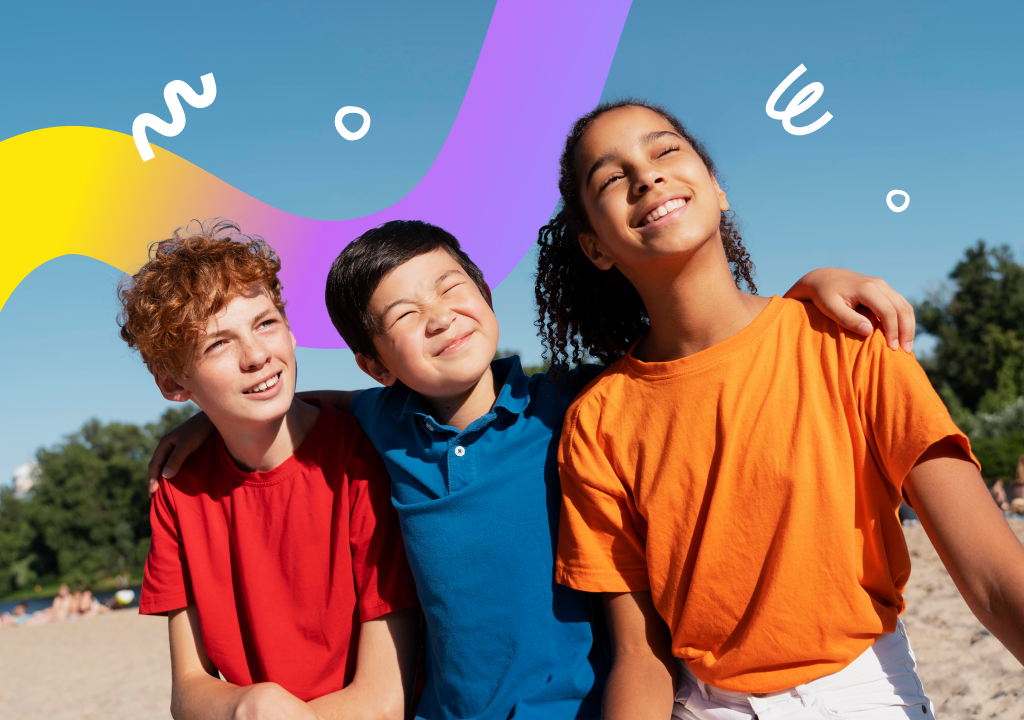Beyond the Hype: The 7 Biggest Myths About Learning Styles
- 7 Myths About Learning Styles
- Myths About Learning Styles
Explore the truth behind popular misconceptions in education. Uncover the reality behind widely held beliefs about how people learn and debunk the seven biggest myths about learning styles.
Are you wondering if your learning styles are holding you back? Learning styles have long been a topic of discussion in educational settings, with many people believing in fixed categorizations that dictate how people learn best. However, as we’ll discover, that opinion is far from the reality.
This article’ll debunk seven of the biggest myths about learning styles, shedding light on the truth behind these misconceptions.

7 Myths About Learning Styles
At Novakid, we understand the importance of recognizing and accommodating diverse learning styles. That’s why we’ve made it a priority to include a variety of teachers and teaching methods throughout our courses. Every child learns differently, and by providing options that cater to various preferences, we can create a more inclusive and engaging learning experience for all students.
By challenging these myths, we aim to empower educators and parents with the knowledge needed to support students effectively.
What Are Learning Styles
Learning styles refer to the different ways you prefer to learn and process information. These preferences can influence how effectively you comprehend and retain new knowledge. While there are many theories about learning styles, they generally fall into four main categories: visual, auditory, tactile/kinesthetic, and reading/writing. Here is a breakdown of each style.
Examples of Learning Styles
Visual: The first learning style we want to introduce is visual learning. Visual learners prefer things they can see and information presented as such, like charts, graphs, diagrams, and other visual aids. Color-coded notes, videos, and slideshows are also beneficial.
Auditory: The next learning style we will discuss is auditory learning by hearing. Auditory learners learn best through listening. They prefer lectures, discussions, podcasts, and audiobooks. You will often find these learners repeating information aloud or listening to recordings.
Kinesthetic/Tactile: Another likely learning style to have is kinesthetic and tactile learning. Kinesthetic or tactile learners learn best through hands-on experiences and physical activities. Activities such as experiments, role-playing, building models, and interactive simulations are ideal for this learning style.
Reading/Writing: Finally, we have the learning style of reading and writing. Learners who prefer reading and writing learn through reading and writing activities. They may enjoy textbooks, articles, written notes, and writing out their thoughts or summarizing information.
It is worth noting that your learning style may be a mixture of more than one of the few listed above. If you aren’t sure what your learning style is, take a moment to reflect on your learning and studying habits and note what strategies and habits you find most effective and which learning style category they fall into.
Myths About Learning Styles
There are dozens, maybe even hundreds, of myths about learning styles floating around the academic world. However, we have discovered that seven big myths are talked about and have a bigger influence on our learning than some of the others. So, we are here today to debunk these seven myths with a guided explanation of each one. These myths include: learning styles are fixed, ESL learners have one dominant learning style, auditory learners excel in language learning, visual learners prefer pictures over words, learning styles determine academic success, learning styles explain learning disabilities and learning styles are cultural.
Learning Styles are Fixed
A common misconception is that learning styles are fixed—that is, once you identify your preferred style, it stays the same forever. In reality, research suggests that learning styles are not as rigid as once thought. Humans are adaptable beings, and our brains are incredibly plastic. This means that we have the ability to learn and adapt to different teaching and information presentation styles. Just because someone may have a preference for one style doesn’t mean they can’t learn effectively through other methods. As you grow and develop, your learning preferences can change.
ESL Learners Have One Dominant Learning Style
The myth that English as a Second Language (ESL) learners have one dominant learning style is not accurate. ESL learners come from diverse cultural and linguistic backgrounds, each with their own unique learning experiences and preferences. These differences mean that ESL learners may have a wide range of preferred learning styles. Some may prefer visual aids, while others may excel with auditory input or hands-on activities.
Auditory Learners Excel in Language Learning
Another myth about learning styles is that auditory learners excel in language learning. While auditory input, such as listening to conversations or recordings, can be helpful, it’s just one piece of the learning puzzle. Language involves multiple aspects like reading, writing, speaking, and understanding grammar rules—all of which require more than just listening skills. Successful language learning depends on a combination of different learning styles and strategies rather than favoring one over the others.
Visual Learners Prefer Pictures Over Words
While this is an easy misconception to make, another myth that is often heard is that visual learners always prefer pictures over words. While visual learners do tend to benefit from visual aids, their learning preferences can be varied. Visual learners may also find written explanations helpful, especially if the text is well-organized and accompanied by visual elements like bullet points or headings. Learning styles are not rigid categories but rather preferences that can vary depending on the individual and the context. Visual learners may still appreciate the clarity and organization that written words provide.
Learning Styles Determine Academic Success
The idea that learning styles determine academic success is a HUGE misconception. Academic success is influenced by a multitude of factors beyond learning preferences, such as motivation, study habits, time management, access to resources, quality of instruction, and individual abilities. Students often encounter a variety of teaching styles and assessment methods throughout their academic journey, requiring them to adapt and employ different learning strategies accordingly. Ultimately, academic success is a complex interplay of various factors.
Learning Styles Explain Learning Disabilities
Next on our list of myths about learning styles is the misconception that learning styles explain learning disabilities. Learning disabilities are neurological differences that affect how you process and understand information and are not determined by learning style preferences. While learning styles refer to the ways individuals prefer to learn, learning disabilities involve specific challenges with certain academic tasks. They can affect individuals across all learning styles and require targeted interventions and support.
It’s important to recognize that learning disabilities are complex and multifaceted conditions that may require specialized assessments and interventions separate from learning style preferences.
Learning Styles Are Culturally Determined
Finally, the myth that learning styles are culturally determined also landed a spot on our list of assumptions that are just not entirely true. Yes, culture can influence learning preferences to some extent, but learning styles are primarily shaped by individual differences and experiences rather than cultural backgrounds. People from the same cultural group may still have diverse learning styles based on factors such as personality, cognitive abilities, and personal experiences. Research suggests that learning styles can vary even within the same cultural group. While cultural factors may influence how information is presented or valued in educational settings, they do not dictate an inherent learning style.
Well, we’ve now tackled seven of the biggest and most common misconceptions surrounding how people learn. From the belief that learning styles are fixed to the notion that they’re culturally determined, we’ve debunked these myths to provide a clearer understanding of effective teaching and learning strategies. Ultimately, understanding that learning styles are not rigid categories but rather preferences shaped by various factors allows educators and teachers to adapt their approaches and create inclusive learning environments where all students can thrive. It’s time to move beyond the hype and embrace a more worldly understanding of how we learn!







































super